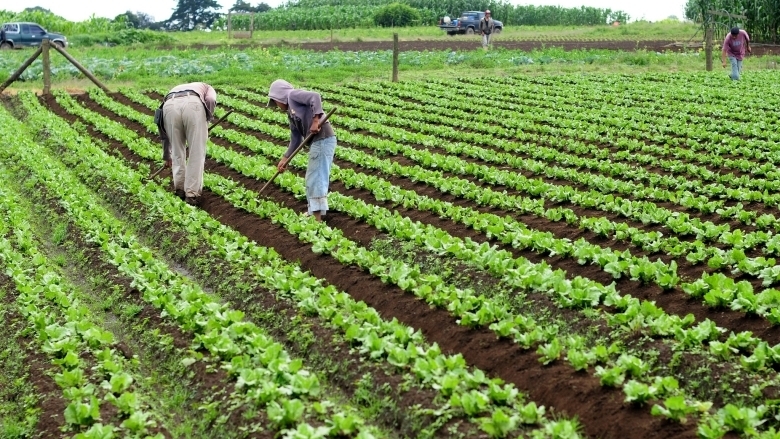
Limits on the mobility of people across borders and lockdowns are contributing to labour shortages for agricultural sectors in many countries, particularly those characterized by periods of peak seasonal labour demand or labour-intensive production. For example, newly implemented travel bans within the European Union, as well as the closure of the Schengen Area, have significantly reduced the available workforce for the fruit and vegetable sector in a number of European countries. Harvesting season is imminent for many products in the northern hemisphere, and a shortage of labour could lead to production losses and shortages in the market. In many countries, this comes on top of existing difficulties in sourcing seasonal labour.
On the other hand, disruptions downstream from the farm gate are in some cases causing surpluses to accumulate, putting a strain on storage facilities and, for highly perishables, increasing food losses. For some products, supply side disruptions are being compounded by demand side reductions (in particular foods typically eaten away from home, and luxury items – see below). In combination, these effects are putting a strain on farm incomes. Moreover, those farm household income losses may be compounded by reduced off-farm income.
The COVID-19 pandemic may also affect the availability of key intermediate inputs for farmers. For the moment, there do not seem to be shortages in producing regions of developed countries, although farmers may face extra difficulties in sourcing inputs due to additional restrictions on the movement of people and goods. However, in the People’s Republic of China (hereafter “China”), for example, the production of pesticides declined sharply and only resumed gradually after production plants were shut down following the outbreak. Low availability and/or high prices of inputs such as pesticides could weigh on yields and crop production in 2020 and 2021, particularly in developing countries. Closing borders or slowing down the transboundary movement of seeds could potentially hamper seed supply chains and on-time delivery of seed with negative impacts on agriculture, feed and food production over the next season and further into the future.

Shifts in consumer demand
Most major economies are expected to enter recession as a result of the COVID-19 pandemic, and the OECD has estimated that for each month the necessary containment measures continue the drop in output is equivalent to a decline in annual GDP growth of up to 2 percentage points. In developed countries, the macroeconomic shock to consumer demand and employment will reduce overall food demand only slightly, but is expected to have a stronger impact on demand for higher value premium products and those with more service addition. Moreover, lower oil prices – a result of forecast lower GDP due to COVID 19 and an oil price war– are reducing demand for crops for biofuels.
Disruptions to food supply chains
Measures put in place to prevent or slow the spread of COVID-19 are also disrupting the functioning of food supply chains. The impacts on labour are of particular concern. The food sector will be vulnerable to the negative impacts on the workforce from the spread of COVID-19 (workers being sick or in isolation), and will face additional production and distribution costs as a result of health and safety measures introduced to reduce the exposure of their workforce. While the virus transmission mechanisms are not fully understood, two clear mechanisms are: (i) people working in close proximity; and (ii) people touching contaminated surfaces. Managing these risks will require immediate changes to the way food is processed and distributed. Many of those changes are already underway, but may be difficult to implement in the short term due to challenges related to sourcing masks and protective equipment for workers.
Transport restrictions and quarantine measures are also likely to impede access to inputs needed by businesses in the food sector. For example, there are reports that interruptions to fertiliser production by some suppliers – due to a lack of workers – have created difficulties for the manufacturers of CO2 and, by extension, the food industry. CO2 is used for different food applications (freezing, carbonation of drinks, and to conserve products in a controlled atmosphere, such as packaged meats, allowing consumption deadlines to be postponed). This poses a challenge for food manufacturers, in particular carbonated drinks manufacturers and large dairy groups.
The COVID-19 pandemic may have implications over the short and long term for food loss and waste. Supply chain losses may increase in the short-term because of logistical bottlenecks and a contraction in the demand for perishables that are often consumed away from home (e.g. milk, eggs and fresh fish). Consumer waste may be increased by hoarding and panic buying, although most of these purchases have been for longer life items, such as flour and pasta. Conversely, restaurant waste, e.g. from the need to offer menu choices, will have been eliminated. Over the longer term the food sector may identify better ways to manage inventories, and consumers may also reassess their shopping and consumption habits, with a view to reducing waste.
Source from oecd.org